The best or the right tires on our expedition vehicles are an eternal campfire conversation. This post aims to provide a contribution to the discussion as objective as possible on this subject, which is often very emotionally debated.
Starting position
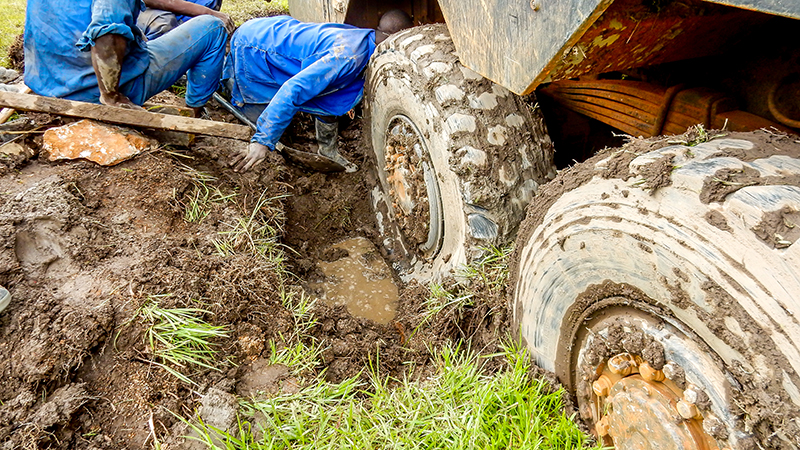
In our community, the expedition vehicle drivers, there is always a discussion about which tires are the right choice. In this post I exclusively focus on truck tires. Many have a firm opinion on this, but in the best case it is based on personal experience and is therefore subjective and dependent on many coincidences. I also clearly belong to this group. Certainly, there is no such thing as the best tire, only the right tire for the job in question.
If I try to research it objectively, I should at least find tests on the different tires. However, truck tire tests are not found as often as car tires because they are much more expensive and would appeal to a much smaller target audience. Tests on expedition tires for trucks are not publicly available at all. Such tests are carried out by the tire manufacturers themselves; however, they are not allowed to speak publicly about their competitors. And the tests carried out by the various purchasing organizations of the country’s military are not made public.
In order to get the straightest information possible, I contacted the manufacturers of tires for expedition vehicles such as Pirelli, Continental, Michelin and the military organizations Armasuisse and the Federal Office of Equipment. I received an answer from the Federal Office for Equipment and Michelin, none of the others found time to answer, even after several inquiries.
Burkhard Koch also wrote a post on this topic at the beginning of 2018. He dealt in detail with the structure, sizes, loads and designations. I am deliberately leaving out this part here because he described it well and refer everyone interested in this to his post.
Tire dimension
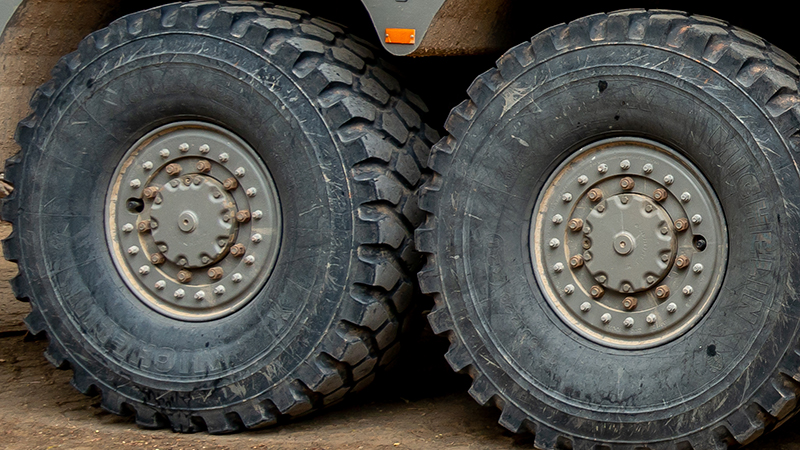
Karl Maurer from Toni Maurer GmbH & Co KG sent me the following input, which I take on more or less 1: 1 because he is one of the great specialists in this area.
- The 385 / 65R22.5 is certainly one of the most popular tires in the world. It is used a lot on truck front axles, but mostly on semi-trailers. The normal load capacity is 9,000 kg per axle. He has a high mileage. The recommended air pressure depending on the axle load is 6-9 bar. The static radius from the road to the middle of the axis is around 500 mm. It is available as a pure road profile and M + S (partially suitable for off-road use). The advantage is certainly the availability around the globe and the disadvantage is the more problematic tire fitting and the less robust carcass.
- The 365 / 80R20 has a robust carcass and is suitable for driving with reduced air pressure in sand and on slopes. However, it is only suitable for vehicles with lower axle loads of up to 7,100 kg. The availability around the globe is poor.
- The 14.00R20 is certainly the most widely used military tire in the world. The axle load is up to 10,000 kg per axle. Only a few profile types are available. The tire impresses with a stable carcass and a static radius of 578 mm, which means that the ground clearance is around 78 mm higher than the 385 / 65R22.5. The tire has a high off-road capability, but also a lower mileage and a high price. It is certainly the best compromise for large vehicles.
- The 395 / 85R20 is slightly smaller than the 14.00R20. The load capacity of up to 11,200 kg per axle is very convenient but is not required. For Karl Maurer, this type makes no sense because it combines the disadvantages of the 14.00R20 (only coarse profile) with a smaller diameter (less off-road capability). There is a manufacturer who offers this type as M + S.
- The 16.00R20 is only possible with very compact 2-axle vehicles, as the tire size reduces the steering angle and the turning radius is usually above the legally permissible values. The advantage is certainly the extreme off-road capability and the optics. The disadvantage is the extremely poor availability and sensitivity at high driving speed.
Quality features
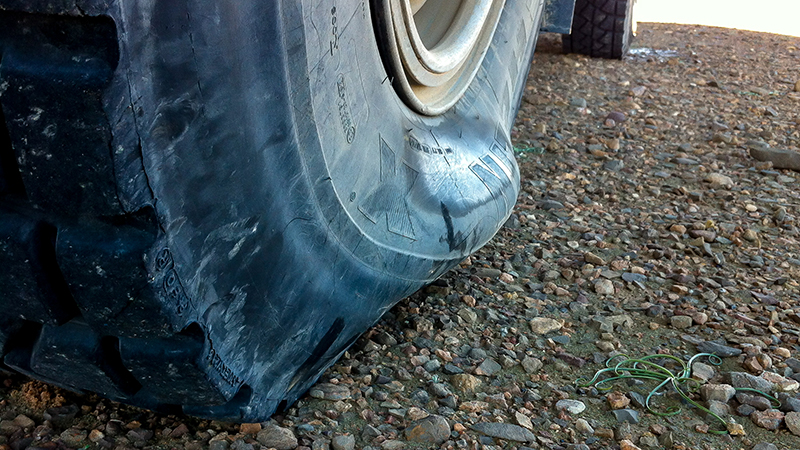
We should pay attention to the following characteristics when choosing a tire:
- the grip on the surface that we want to drive on
- The run flat performance, how long a tire will last when driven without air pressure
- the strength of the carcass, partly when rolling on the flanks of the tire with reduced air pressure
- the tear resistance
- the abrasion resistance on different surfaces, respectively the mileage
- the ozone resistance
- the possibility of repair
- Subsurface corrosion, how quickly the steel insert of a tire rusts after a tire damage
- the economy
Unfortunately, no tire dealer can compare these features for us.
Test comparisons
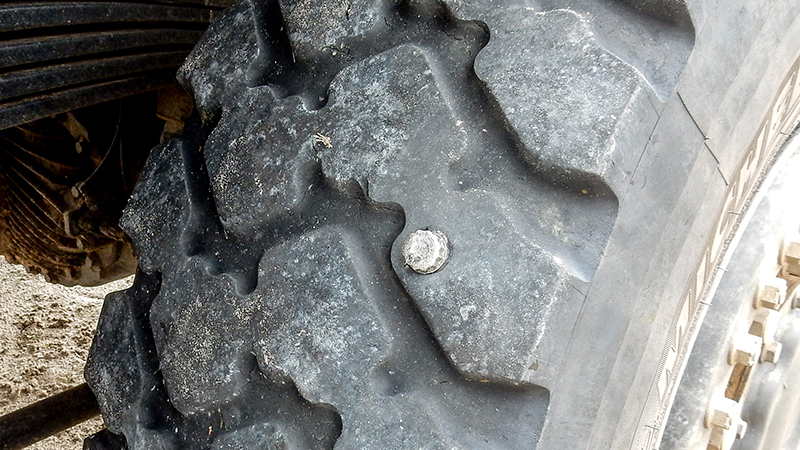
The only test information that the Federal Office of Equipment was allowed to give me is that the run-flat performance achieved for tires from different manufacturers can vary by up to four times under otherwise identical conditions. On the other hand, Michelin says that if their tires were punctured, they would last longer than their competitors’. A colleague in Namibia experienced the “explosion” of two of his Continental HCS within two days. Presumably, he drove himself a hole and, despite the tire pressure monitoring system, could not react quickly enough so that the tire parts on the rear axle flew up to his rearview mirror. When I combine these three pieces of information, I conclude that the run-flat performance of Michelin XZL is four times higher than that of Continental HCS.
Another colleague drives a vehicle comparable to our Globi. He drives the Continental HCS and we drive the Michelin XZL. He probably drives a little more asphalt like us. His mileage is 80,000 and ours is 40,000. That would mean that the mileage of Continental HCS is twice as large as that of Michelin XZL.
On our travels we ran several times in mostly M20 screws on the third axle and had to repair the tires. The repair was always easy using various methods and lasted until the end of the tire’s life.
We damaged the sidewalls of the tires in volcanic rocks, but never had any damage. On soft ground we often ride with reduced air pressure and accordingly on the flanks. Until today we have never had any damage as a result.
Conclusion
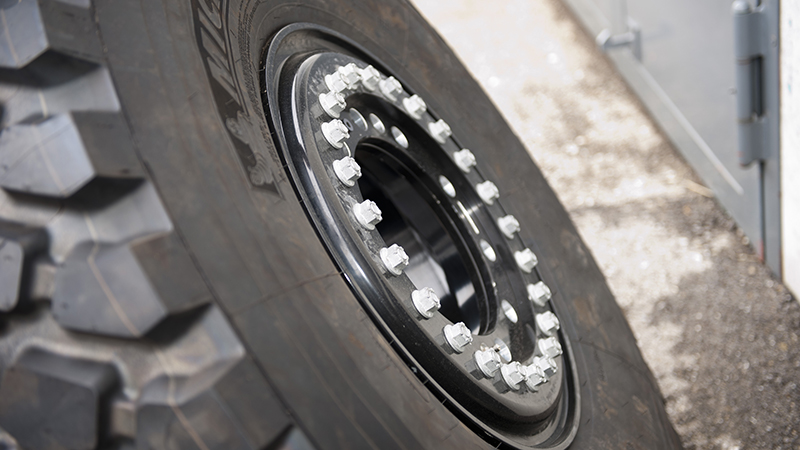
Unfortunately, after my research, I still cannot say which is the ultimate best tire for expedition vehicles. However, one principle is important to me: an off-road vehicle needs off-road tires; the overall vehicle system is only as good as its weakest link. If someone is installing low priced construction site tires on their off-road vehicle for financial reasons, it would be cheaper to save the expensive off-road technology. Colleagues also told me that they no longer fit off-road tires because they drive 90% asphalt. From a statistical point of view, this is a smart decision. It is just a pity though when the ultimate overnight locations and slopes are situated in the last 10%. There are also colleagues who fit 16-inch tires because it simply looks better. This is also justified as long as one does not want to explain it with other facts.
The selected tire must match the vehicle, the area of application and the driver, then it is the right one.
Sources of information
- Karl Maurer, Toni Maurer GmbH & Co. KG
- Eine Sprecherin des Bundesamtes für Ausrüstung, Informationstechnik und Nutzung der Bundeswehr
- Holger Kirmse, Michelin


Thank you Peter and Gabi. Point 3 and 5 you started with 00. I guess it must be 14.00. Just saying.
Very interesting article. I’am a old mountainbiker (57) and here we talking al lot about tires. Now these days al the bikes are 29” wheels, but ten years a go everybody has the 26” Wheels in his bike. The weight ofcourse Is a big difference between your (beautiful) Globi and my Specialized full suspension mtb (9 kg) here in the Netherlands it’s flat as you know, but we have a lot of mtb-tracks were we can speed up, so the pressure makes it competitive with my buddy’s. I have 1.9 bar in front and rear wheel. My buddy’s around 2.3 bar. But I can climb 36% uphil and they don’t. Hahaha. Next year or no later than 2022 we buy are self a expedition vehicle. We already sold are house and now work hard (both of us) save money and maybe we will meet you guy’s somewhere, if you still traveling. We have already recorded our name. So keep a eye for……”room2move. I will continue to follow you on YouTube and Instagram.
Best regards Tony aka mr.widewood (instagram)
Thanx, Tony, I just correced my mistakes.
We’ll meet you sometime somewhere, I’m sure.